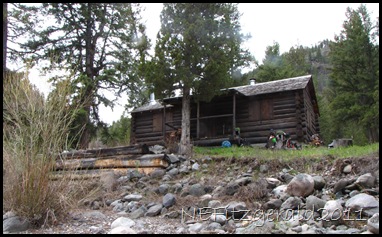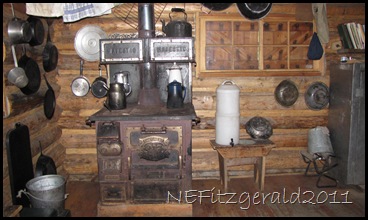As I discovered this past summer, there are exciting and exhilarating perks to being an interpretive ranger in our first national park. For nearly five months I lived a mere 10,000 feet above a ginormous subterranean magma chamber, inside the boundary rim of one of the world’s largest active volcanoes. Not extinct. Not even dormant. This baby is A-C-T-I-V-E! I woke up every day and went to work amid the highest concentration of thermal features on the planet – erupting geysers, searing hot springs, boiling acidic mud pots, and steaming fumaroles were everywhere around me. Nearly every day I roved the boardwalks of West Thumb Geyser Basin, the largest thermal area on the shores of Yellowstone Lake. Daily, I prayed I could avoid being run off the road by rental motorhomes intent on getting to Old Faithful before the next eruption. It was unquestionably a life being lived on the edge.
However, there is one additional perk of park rangering that I was lucky enough to experience within this milieu of potential supervolcano explosions and madly driven motorhomes.
Whenever I went backpacking, I stayed in patrol cabins. How cushy is that?
Patrol cabins are generally used by backcountry rangers. If a particular cabin is not scheduled for use on a particular day, frontcountry interpretive rangers are permitted to stay there as long as we do not eat up any of the stored supplies and we leave it cleaner than we found it.
My introduction to these laps of backcountry luxury occurred at the Lower Blacktail cabin (read all about that trip here). It was then that I decided I could really get used to this camping lifestyle. It was quite chilly early in the season so we cranked up the wood stove for warmth and cooked our dinners on a variety of backpacking stoves.
 |
| Lower Blacktail cabin |
 |
| Relaxing on the Yellowstone River |
 |
| Cabin detail |
 |
| The Great Majestic |
 |
| Nest for the night |
My second plan to spend the night at a patrol cabin was more problematic. In my eternal summer’s quest to locate the elusive two–lipped beavers of Yellowstone I sought out Cougar Creek in the rain. I had recently read that beavers could be found there (why didn’t I pay attention to the fact that the study was done in 1998? Beavers chew down all the trees and move on!). A patrol cabin was shown on the map. It was easy enough to convince Friday–hiking–buddy Sacha to go with me. When I called the appropriate backcountry office I was told I could stay there the entire month of September if I wanted to, since no one had reserved it. Nobody asked me if I actually knew where I was going. In hindsight, perhaps this should have been my red flag…
 |
| Pen points to alleged location of Cougar Creek patrol cabin |
We easily found the route to where we thought we were going. There was supposed to be a fork in the trail at the trail sign. After all, it was on the map! Gneiss Creek trail did veer off nicely to the northwest. Sadly, “Upper Cougar Creek” trail disappeared within nano–inches of the sign. We both commented that it did not look like anyone had passed this way in at least fifteen years (another red flag ignored…). So the two of us put our map–reading skills to work in the rain and followed the contours of the hills. Cresting a low rise we came nearly nose–to–nose with three burly bison who seemed to regard as suspect our appearance in their domain. In the distance we could clearly see what we determined to be the appropriate creek drainage. Here we would finally find the dry cozy comfort of the Cougar Creek patrol cabin.
Yeah, right.
We slogged onward in the steady, drizzly rain and grassy creeky muck for about an hour. Flow in the creek was sluggish. We climbed up and over beaver–gnawed trees that looked suspiciously like they had been burned after they were gnawed. We groaned “It’s got to be here somewhere!” along with “I don’t think the dang thing is here anywhere!” In the end we never found the cabin and so dejectedly schlepped the four miles back to my car. The bison eyed us skeptically as we disappeared around the hill. They could have mentioned something about the cabin. At least the rain had stopped.
 |
| Where’s the trail? |
A few days ago I received an update from Friday–hiking–buddy Sacha in Montana: “Cougar creek cabin was moved because of the fires of 1988. Maps are still based on surveys from the 70s. It’s in the Old Faithful district, so that is who we should talk to if we actually want to find it. My roommate was a backcountry ranger in the Old Faithful district and has actually been there!”
Now they tell me! Somehow, the fact that the Cougar Creek patrol cabin is located in the Old Faithful district instead of on Cougar Creek diminishes its allure. Maybe I’ll go there one day. But not to worry! There are more patrol cabins left in my summer season at Yellowstone, and we’ll take a peek at them in my next post.






